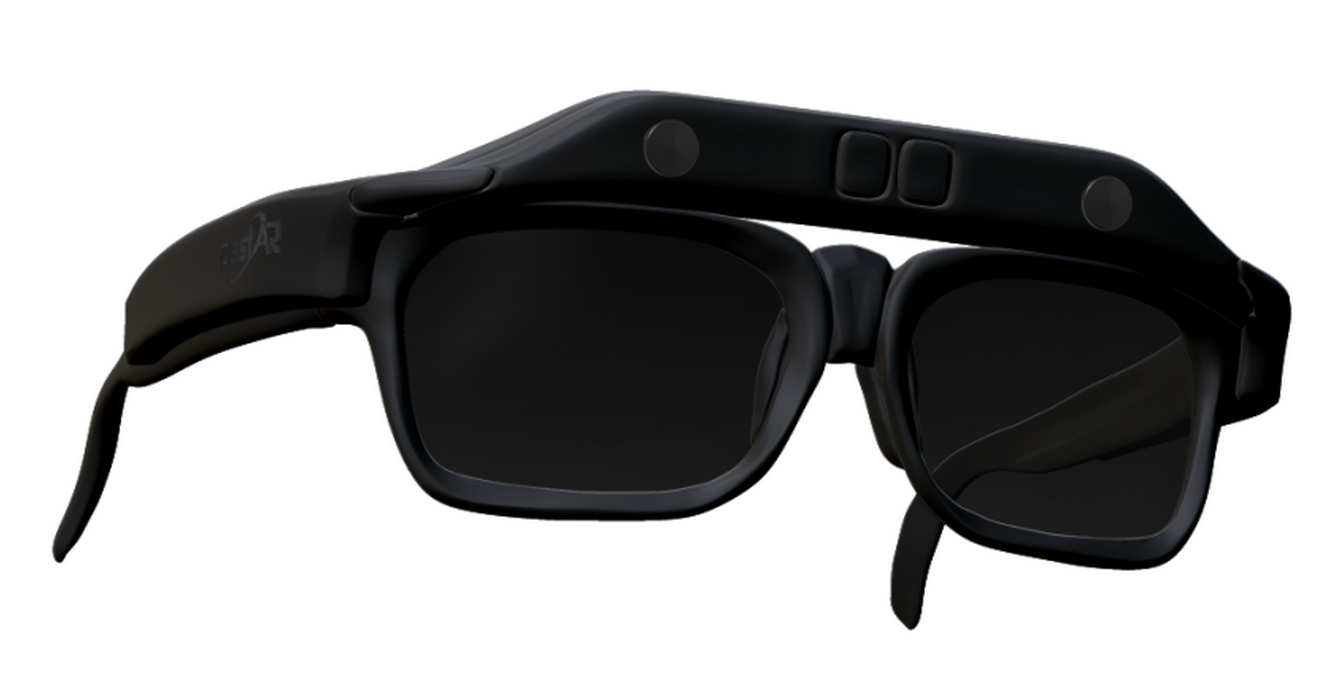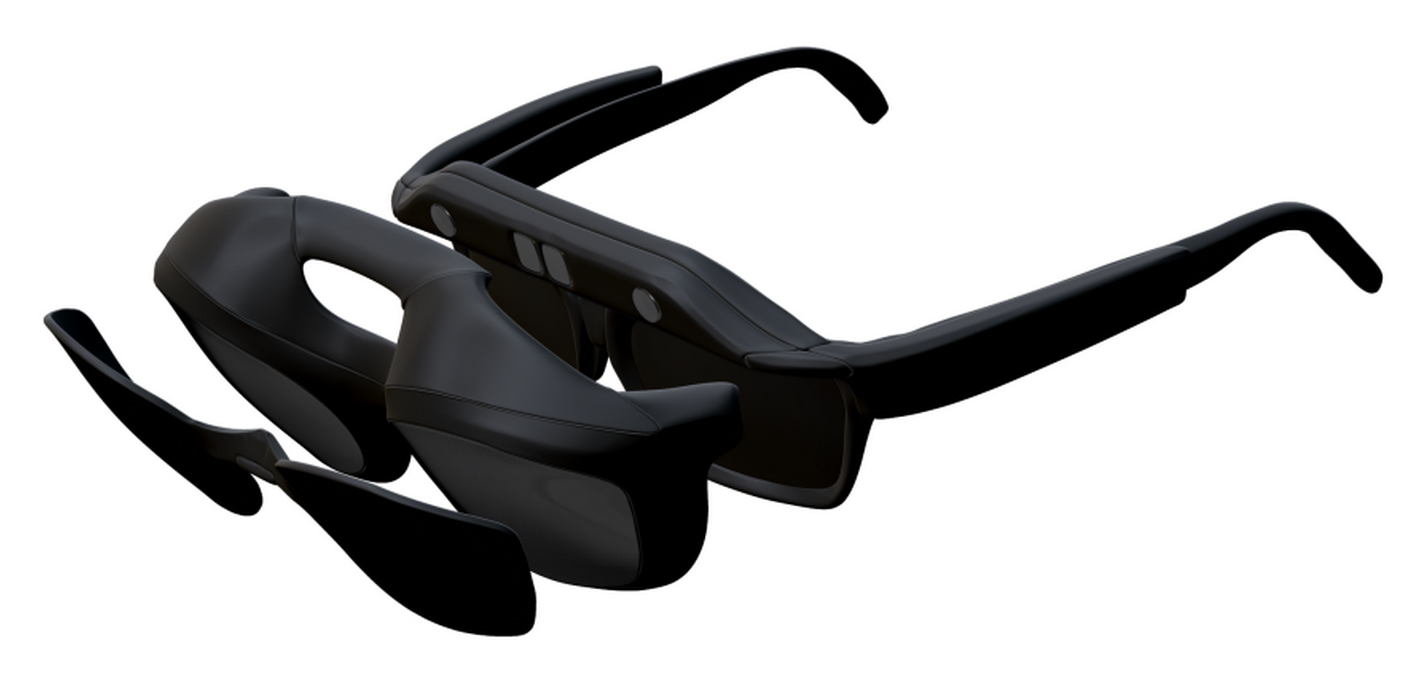The Past, Present, And Future Of VR And AR: The Pioneers Speak
Technical Illusions castAR
Technical Illusions' castAR is an augmented reality technology that was born out of work that started inside Valve Software. Now a completely independent company, Technical Illusions is hard at work in getting the first developer kit out to game makers. Rather than having a display mounted in front of your eyes like other VR and AR solutions, castAR instead projects the image into your surroundings. The image bounces off a reflective surface back to your eyes, giving you a stereoscopic sense of depth, but without taking you completely out of your own real world. Imagine gaming in the fantasy world of your living room, and then being able to get up to grab a snack from the kitchen, all the while seeing all the action still taking place just a few feet away – that's one of castAR's many promises.
The answers to our questions were a Technical Illusions team effort.
Read more: castAR Technology Primer
| castAR Hardware | Specs |
|---|---|
| Dual projectors | Total system resolution 2560x720High Definition 1280x720 per eye24 bits per pixel120 Hz refresh rate per eyeProgrammable low persistence65 degree field of view in projected mode90 degree field of view with optional AR/VR Clip on lenses. |
| Head and Motion Tracking | 120 Hz absolute trackingSub millimeter precision1000 Hz Inertial tracking |
| castAR Glasses | Transparent and see-through lensesErgonomic open frame designLess than 100 gBinaural/Stereo positional audioLightweight micro coax cableMicrophone |
| castAR Wand | 120 Hz absolute trackingSub-millimeter precision1000 Hz Inertial trackingAnalog thumb joystickTrigger and 5 buttons |
| castAR RFID Grid | Surface tracking of RFID enabled objectsCentimeter tracking accuracyBidirectional communication for computer control of RFID enabled objects |
Tom's Hardware: Is your technology based on AR or VR, and why?
Technical Illusions: castAR is the only product that has three amazing functions: Projected Reality where you see an interactive hologram-like image displayed in front of you; AR with full resolution and field of view; and top quality VR. While projected reality is a magical experience, we believe consumers will also want excellent AR and VR. Projected Reality with castAR is a very natural and comfortable experience with none of the typical issues (headaches, nausea) that some people experience with an occluded display. In creating castAR, we felt it important that people could still see and interact with the real world around them, while still engaging with their augmented content.
Tom's Hardware: When will we see mass adoption of VR and AR technology (defined as more than one million customers)?
Technical Illusions: Mass consumer adoption is likely to occur by 2017, and can be accelerated with great content, prices, and ergonomics (aesthetics, comfort, weight). We expect many vertical markets to embrace castAR even sooner, which increases the awareness and appeal to consumers.
Get Tom's Hardware's best news and in-depth reviews, straight to your inbox.
Tom's Hardware: What are the technical hurdles still standing in the way?
Technical Illusions: The roadmap for castAR is deep, with new technical milestones with every product innovation. For our first release, the technical hurdles have been solved, although we’re always working to improve our optics and tracking. For those who’ve tried castAR at our many public demos, they would agree that even our earliest prototypes deliver that magical experience of Projected Reality. Leading up to release, we’ll be showing off the updated input wand, AR/VR clip-on accessory, and mobile device support.
Tom's Hardware: What are the non-technical hurdles standing in the way?
Technical Illusions: There is tremendous opportunity available, and effort still required in non-technical aspects. Content needs to be created – both original and innovative apps, as well as conversion of existing games. While early adopters can be forgiving on ergonomics, mass market adoption will need better aesthetics, comfort, and weight. Another aspect of these emerging technologies is the classic “you must see it to believe it.” So getting people to experience castAR is vital to consumer education and interest.
Tom's Hardware: What steps are needed to remove those hurdles?
Technical Illusions: From a content perspective, we’re working with developers to find best practices for user interface and input. Lots of great ideas and experimentation happening on these fronts. Ultimately, we believe an open ecosystem of developers and partners will devise clever ways to make castAR a great content experience. Our community of developers and early adopters will assist us in spreading the word on castAR, and we’ll continue bringing the product to events where people can try it for themselves.
Tom's Hardware: What is your company doing specifically and technically to remove those hurdles?
Technical Illusions: To assist developers in creating castAR content, we’re polishing our SDK which includes support for popular game engines like Unity. We’ll be very hands-on with developers to assist them in creating a great experience during development, as well as connecting them to our consumers through marketing and search/discovery programs. Specifics will come in the second half of 2014 as we start delivering castAR development kits to our initial developers and partners.
Tom's Hardware: How will VR and AR change the gaming ecosystems in the future (PCs and components, consoles, controllers, and the games themselves)?
Technical Illusions: Emerging technologies like castAR and other AR/VR products represent a new style of content for developers to create. There are entirely new ways to tell stories and engage the gamer through these products. While we’ve heard many clever developer ideas, I think we’re only scratching the surface at what’s possible. With the gamer able to experience their content at any location, as well as interacting with physical objects (a key advantage of castAR), the real world is literally the new game map. And yes, we’ll certainly see existing game genres and brands enhanced for these products.
Tom's Hardware: How will VR and AR change the world outside of gaming? Give us the most remarkable, life-changing examples you expect to happen.
Technical Illusions: The opportunities for castAR outside of gaming are incredible! Every person who experiences it offers new ideas. While the applications in location-based-entertainment is obvious (holodeck, theme parks, virtual dinner dates, etc), I’m awed at the innovation coming from the educational and medical communities. In many real-world situations like a classroom or operating room, the user can’t use an occluded display, and is usually interacting with physical objects in the real world (keyboards, scalpels, instructors, etc.). One day, our students doing research on Wikipedia will be able to see 3D representations of people, objects, and locations, creating deeper understanding and appreciation of the larger world. Chemistry, biology, and physics experiments are conducted safely, augmented on the work bench in front of them, without expensive or prohibitive materials. The classroom with castAR is much more engaging and effective than today’s school.
Read more: castAR Shows New AR Glasses With Upgraded Projectors
-
icepick314 would Virtual Boy from Nintendo count as VR tech?Reply
it's missing in the article's timeline...
also an arcade game Time Traveler that had "holographic" screen... -
Cazalan I think they're wasting too much time on the motion capturing aspect. Just give me a headset that looks better than a 30" monitor and I'm sold.Reply -
Vlad Rose With the Virtual Boy, I would call it VR tech as it uses similar technology that used in the VR gear that is coming out. With Time Traveler and Holosseum, I would say no. What they used was a single 2D screen that was projected to a curved mirror to create a false reality of the image 'sticking out'. It is more comparable to 3D movies than Virtual Reality.Reply -
clonazepam The Vuzix seems pretty cool. We've already accepted bluetooth headsets and its a very similar look. I hope they all account for the fact that some people are right-handed and left-eye dominant or other way around, as well as color blind or red / green deficient.Reply
I think the Vuxio would be the most useful in everyday life, while obviously Oculus or Morpheus being the most fun. -
Shankovich Morpheus looks cool but it just can't compete with the rift when hooked up to the PS4; it just doesn't have the graphical power to run above 1080P games with acceptable level of detail, effects, etc. especially when the frame rate will need to be at 60fps or more to reduce nauseating effects. On PC, the rift has better sensors (geomagnetic) and is better able to take care of movement lag.Reply -
CaedenV @CazalanReply
Agreed. I am all for VR to hit when it is really ready, but until then I would be extremely happy with a high resolution headset to use as an immersive display. I don't want to have to crane my neck and change my body's orientation when gaming. I still want a keyboard/mouse or controller as input and be able to sit back on the couch and just play a game. I have a nice big yard to work on if I want something active to do... when I am gaming I want to get into it, but with the least amount of physical effort possible. -
Henderburn The VR timeline should include the release of "Snow Crash," the novel that inspired John Carmack and Michael Abrash to make Quake and build the foundations for VRReply -
WyomingKnott I'm still waiting for a decent eyeglass-size display so I can read a book while the dentist pokes at my teeth. Seriously, we don't have even the basic display element available commercially?Reply -
Cybolic Vuzix examples are probably the worst I've ever heard: "having a sales associate be able to answer your questions" and "see exactly where your veins are so they only stick you once with the needle to get the blood", yeah, they are supposed to already be able to do that without wearing special glasses; it's literally what they're being paid for.Reply



